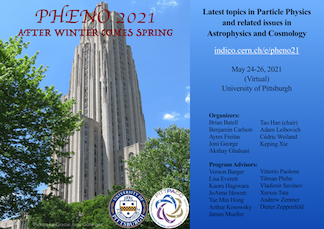Speaker
Description
The Gaia satellite will observe the positions and velocities of over a billion Milky Way stars. In the early data releases, the majority of observed stars do not have complete 6D phase-space information. We demonstrate the ability to infer the missing line-of-sight velocities until more spectroscopic observations become available. We utilize a novel neural network architecture that, after being trained on a subset of data with complete phase-space information, takes in a star’s 5D astrometry (angular coordinates, proper motions, and parallax) and outputs a predicted line-of-sight velocity with an associated uncertainty. Working with a mock Gaia catalog, we show that the network can successfully recover the distributions and correlations of each velocity component for stars that fall within ∼ 5 kpc of the Sun. We also demonstrate that the network can accurately reconstruct the velocity distribution of a kinematic substructure in the stellar halo that is spatially uniform, even when it comprises a small fraction of the total star count. Follow-up work includes applying the network to the Gaia catalogue and searching for kinematic substructure, which can provide useful information about the underlying dark matter distribution in the Milky Way.

